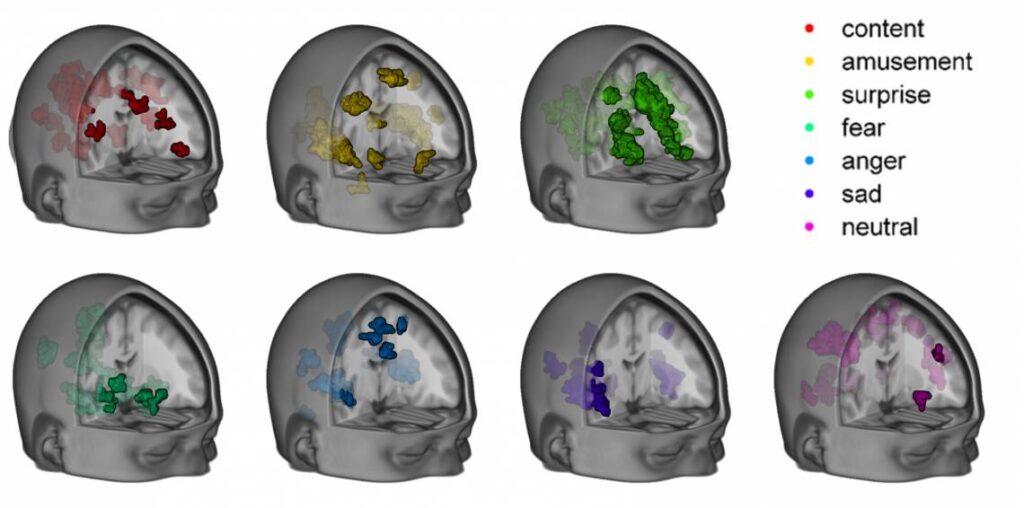Have you ever felt your mind scanning your surroundings for danger, even when you’re not sure what you’re looking for? This process is called a “fear scan.” It’s a natural reaction that helps keep us safe by identifying threats. Let’s explore what fear scans are, why they happen, and how they impact your life.
What Does Fear Scans Mean?
Fear scans refer to the mental process of constantly looking for signs of danger or threats in your environment. This is a built-in survival mechanism that humans have developed over time. Imagine you’re walking alone in the dark and hear a strange noise. Your brain immediately starts scanning for danger, trying to figure out if the noise is a threat. That’s a fear scan in action.
These scans are part of the body’s fight-or-flight response, which prepares you to either defend yourself or escape a dangerous situation. Fear scans can happen in a split second or linger for longer periods, depending on the situation. While this mental process is essential for survival, it can sometimes go overboard, leading to unnecessary stress or anxiety.
Why Do People Experience Fear Scans?
Fear scans are deeply rooted in human biology. They are designed to protect you from harm. Thousands of years ago, our ancestors relied on fear scans to detect predators or other dangers in the wild. Even though modern life doesn’t usually involve wild animals, your brain still uses this ancient survival tool to detect more subtle threats, like a stranger acting suspiciously or a sudden change in your surroundings.
Another reason for fear scans is your personal experiences. If you’ve ever been in a frightening situation, your brain may “remember” that event and become extra vigilant in similar situations. For example, if you’ve been in a car accident, you might find yourself scanning for danger every time you drive. This heightened awareness can help you avoid future risks, but it can also lead to heightened anxiety if it becomes too intense.
How Fear Scans Help You Stay Safe
Fear scans play a vital role in keeping you safe. They act as an early warning system, helping you notice potential dangers before they escalate. For example:

- In crowded places: Your brain may scan the crowd for unusual behavior, helping you stay alert to possible risks like pickpockets or other dangers.
- At night: When walking in the dark, fear scans help you stay aware of your surroundings and avoid potentially unsafe areas.
- In emergencies: If you hear a fire alarm, your brain immediately starts scanning for the source of danger and the quickest way to escape.
Fear scans can also improve your decision-making skills. When your brain identifies a threat, it forces you to think critically and act quickly, whether that means avoiding a dangerous road or seeking help in an uncertain situation.
Are Fear Scans Always Accurate?
While fear scans are helpful, they’re not always accurate. Sometimes, your brain might overreact to a situation that isn’t truly dangerous. For example, hearing a loud noise might make you think there’s an immediate threat when it’s just a car backfiring. These false alarms are common because your brain prioritizes safety over accuracy.
When Fear Scans Go Overboard
Fear scans can become overwhelming if they happen too frequently or in situations where there’s no real danger. This can lead to constant feelings of anxiety, which may interfere with your daily life. For example, someone with social anxiety might experience fear scans every time they’re in a social setting, scanning for signs of rejection or judgment.
Can You Control Fear Scans?
The good news is that while fear scans are automatic, you can learn to manage them. By practicing mindfulness, relaxation techniques, and other coping strategies, you can train your brain to respond more calmly to perceived threats. Over time, this can help reduce the intensity and frequency of fear scans.
Signs That You Are Experiencing Fear Scans
How do you know if you’re experiencing a fear scan? Here are some common signs to look out for:
- Heightened awareness: You feel hyper-focused on your surroundings, noticing even small details that you might usually ignore.
- Racing thoughts: Your mind keeps running through possible scenarios, often imagining the worst-case outcomes.
- Physical symptoms: Your heart rate might increase, your breathing might become shallow, or you might feel tense.
- Inability to relax: Even in a safe situation, you might find it hard to stop worrying or scanning for danger.
If you notice these signs frequently, it could be a sign that your fear scans are becoming too intense or frequent.
Common Triggers for Fear Scans
Fear scans can be triggered by a wide range of situations, depending on your personality, past experiences, and environment. Some common triggers include:
- Loud noises: Sudden, unexpected sounds can activate your fight-or-flight response.
- Unfamiliar environments: Being in a new or unpredictable place can make your brain more alert to potential dangers.
- Stressful situations: High-pressure scenarios, like public speaking or meeting new people, can increase fear scans.
- Past trauma: If you’ve experienced a traumatic event, similar situations might trigger fear scans, even if there’s no immediate danger.
Understanding your triggers can help you prepare for and manage fear scans more effectively.
How to Calm Down During Fear Scans
If you’re experiencing a fear scan, there are several techniques you can use to calm down and regain control. These methods can help reduce anxiety and bring you back to the present moment.

Breathing Exercises to Relax
Controlled breathing is one of the simplest and most effective ways to calm your mind during a fear scan. Try this exercise:
- Take a slow, deep breath in through your nose for a count of four.
- Hold your breath for a count of four.
- Exhale slowly through your mouth for a count of four.
- Repeat this cycle several times until you feel more relaxed.
Deep breathing helps lower your heart rate and sends a signal to your brain that you’re safe, which can interrupt the fear scan.
Positive Thoughts to Stop Fear Scans
Fear scans often involve negative or catastrophic thinking. To counter this, try replacing negative thoughts with positive or rational ones. For example, if you’re worried about a loud noise, remind yourself, “It’s probably nothing serious. I’ll check it out calmly.” Positive thinking can help reframe the situation and reduce your anxiety.
Using Movement to Shake Off Fear
Physical movement can help release tension and interrupt the fear scan. Simple activities like walking, stretching, or even shaking your arms can help your body process the excess energy caused by fear. Exercise also releases endorphins, which can improve your mood and help you feel more in control.
Can Kids and Adults Handle Fear Scans Differently?
Fear scans affect people of all ages, but kids and adults may experience them differently. Children are more likely to experience fear scans because their brains are still developing, and they’re learning how to assess risk. For example, a child might become overly scared of a shadow in their room because they can’t yet distinguish between imagination and reality.
Adults, on the other hand, often have more experience and coping skills, which can make it easier to manage fear scans. However, adults may also face more complex triggers, such as work stress or financial worries, which can make their fear scans feel overwhelming at times.
The Bottom Line
Fear scans are a natural part of being human. They’re your brain’s way of keeping you safe by scanning for potential dangers. While they’re often helpful, they can sometimes go overboard, leading to unnecessary stress or anxiety. By understanding fear scans and learning how to manage them, you can take control of your mind and reduce the impact of fear on your life.
If you find that fear scans are interfering with your daily activities or causing you distress, consider seeking help from a therapist or counselor. With the right tools and strategies, you can learn to manage fear scans and live a calmer, more balanced life.


